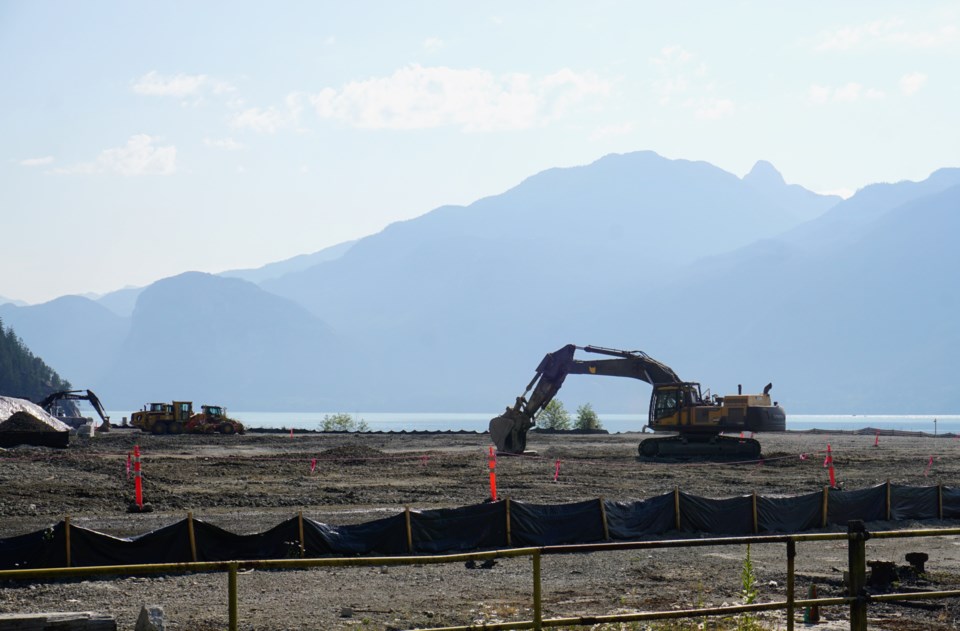The District of Squamish announced it intends to charge a 12.5% tax on Woodfibre LNG (WLNG) when BC Assessment officially classifies it as a major industry.
Yet, WLNG says there are still upcoming discussions on a long-term tax agreement.
At the April 16 regular business meeting, Squamish council revealed that it intends to charge WLNG a tax rate of $125 per $1,000 assessed value when BC Assessment classifies the plant to Class 4—major industry.
“It's important for our community to note within this report our ongoing efforts to try and sit at the table with Woodfibre LNG to come to a 10-year tax agreement or a negotiated settlement there and that has not occurred to date,” said Coun. Jenna Stoner at the meeting. “This is kind of the opportunity that we have to ensure that that project, when it does get reclassified to major industry, is paying its fair share of our tax burden.”
The District report alongside the meeting says the B.C. average tax rate for major industry is about $29 per $1,000 assessed value, or a 2.9% tax.
The proposed District rate for WLNG is over four times greater than that average, which would equate to millions of dollars in tax revenue from WLNG.
As for a long-term tax agreement, a spokesperson for WLNG told The Squamish Chief in an email that discussions on a tax agreement are ongoing.
“Woodfibre LNG has been engaged in good faith tax discussions with the District of Squamish, aimed at achieving a 10-year tax agreement with the District of Squamish that would provide enhanced tax revenue to the District in the years before facility construction is complete,” reads a statement from the company.
“Both parties engaged expert consultants in this field, and a meeting to discuss their work is upcoming. While the timely conclusion of this work has been impacted by periods when the District’s consultant was unavailable due to other professional obligations, Woodfibre LNG has and will continue to work sincerely, collaboratively and in good faith to conclude an agreement.”
Bryan Murao, an assessor with BC Assessment, told The Squamish Chief that generally classifying WLNG into the major industry category will occur when construction of the actual “industrial improvements” commence. The term industrial improvements comes from both Prescribed Classes of Property Regulation and the Assessment Act, which includes “producing, manufacturing, processing or refining of petroleum or natural gas” as one of the categories that falls under industrial improvements.
“Actual construction of improvements goes beyond general pre-construction activities like site clearing, site preparation, land remediation, etc.,” he wrote.
More or less, once WLNG begins to build the plant, then the assessment would classify it as major industry. This classification is defined for a property’s land use on Oct. 31 of every calendar year.
A January 2024 update on WLNG’s website says pre-construction work is ongoing. The project is anticipated to be completed by 2027.




